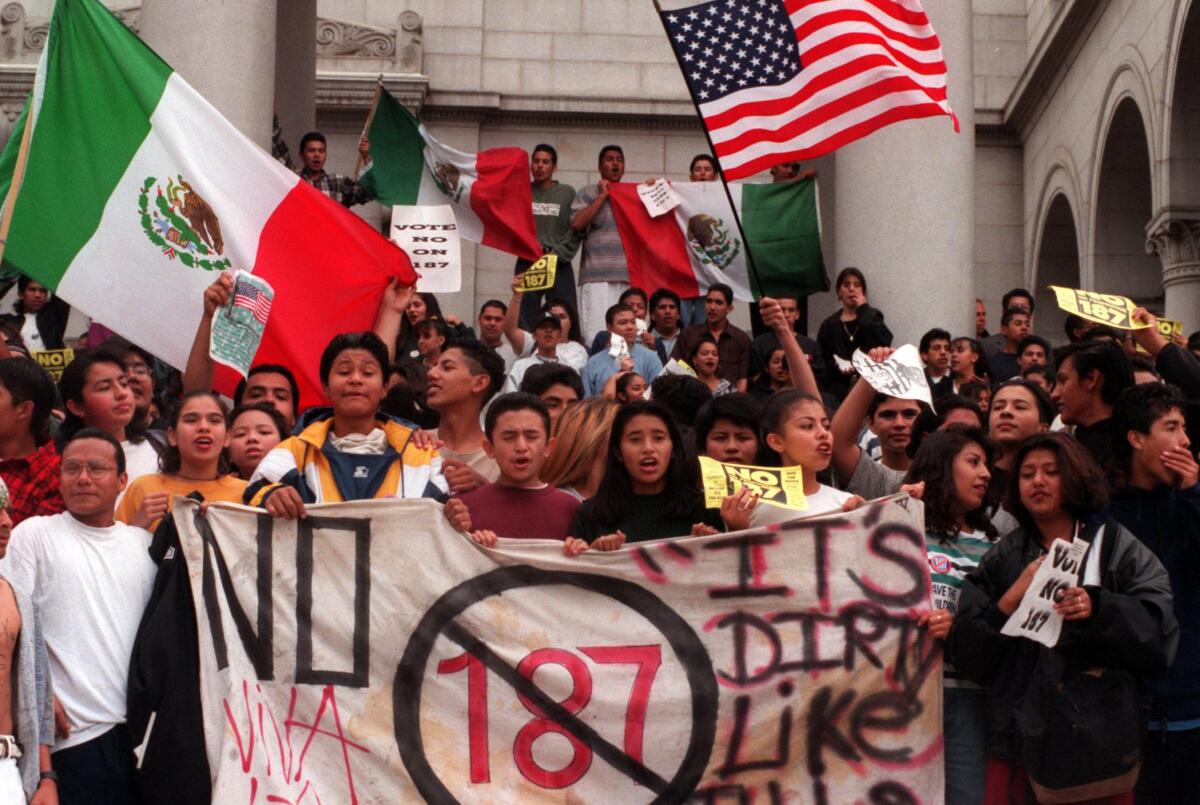Letters to the Editor: Stop implying that supporters of Prop. 187 were all racist

- Share via
To the editor: Close your eyes and picture this: Jews fleeing Europe, coming to our shores on boats, begging to be taken in and instead sent back to their deaths. Now picture a rowdy group of undocumented demonstrators demanding rights while waving flags of their country of origin. (“Proposition 187’s anti-immigrant cruelty was a California tradition,” Opinion, Nov. 7)
One picture pulls at your heartstrings, the other antagonizes you. Poor strategy? Without a doubt. Even sympathetic people were put off, which is why Proposition 187 got 59% support in 1994.
There’s no doubt with the election of President Trump that the pendulum has swung way too far the other way. As Natalia Molina writes, U.S. immigration policy today offers a parade of horrors, but her op-ed article does not help. She doesn’t make the slightest attempt to understand the other side and doesn’t offer a solution.
In reality, she incites divisiveness with statements like, “But it’s worth remembering that in 1994, the majority of Californians were more than willing to adopt cruelty against immigrant families as state policy.”
There has to be some middle ground on which we can all stand. The 2013 immigration reform bill gave Republicans most of what they were asking for; 68 senators voted for it, including 14 Republicans in a period where they were sworn to obstruct everything Obama did.
John Harduvel, Huntington Beach
..
To the editor: The op-ed piece by Antonia Hernandez and Alex Padilla is remarkably accurate in its assessment of the racism prevalent in the era in which Proposition 187 passed and how things changed as a result. As the writers note, the proposition was blocked in the courts.
But four years later, Proposition 227 passed. It was called the “English only” law and it prohibited bilingual education in public schools.
Unfortunately, a generation of non-English-speaking children were denied programs that research told us produced the best academic results of any type of instruction. It took 18 years and Proposition 58 to restore bilingual education in California.
Now, students in the whole state, both English speakers and learners, can choose to participate in dual language programs. In Los Angeles, enrollment in these programs has almost quadrupled since 2016, when Proposition 58 passed.
Cheryl Ortega, Los Angeles
The writer is director of bilingual education for United Teachers Los Angeles.
More to Read
A cure for the common opinion
Get thought-provoking perspectives with our weekly newsletter.
You may occasionally receive promotional content from the Los Angeles Times.






